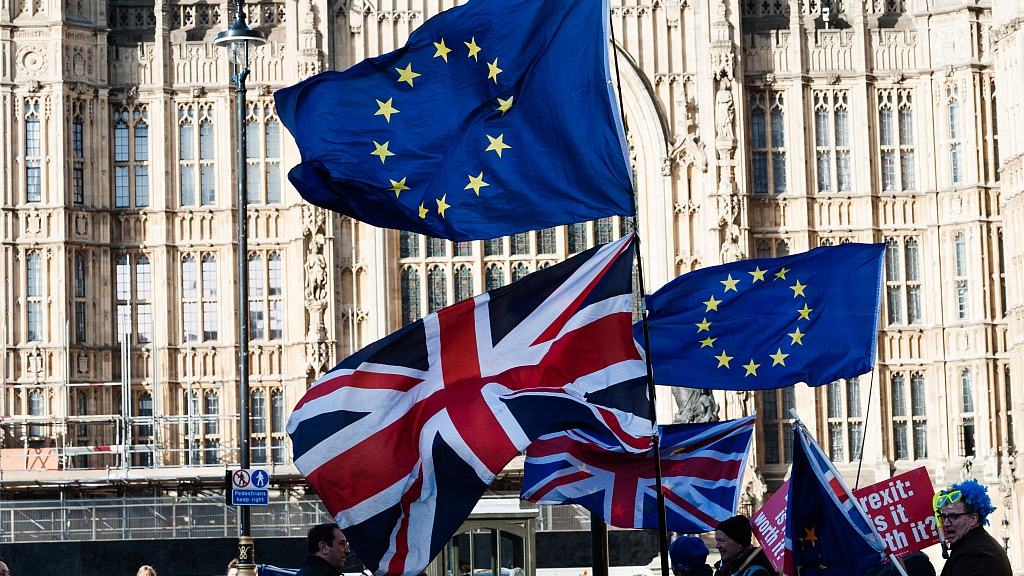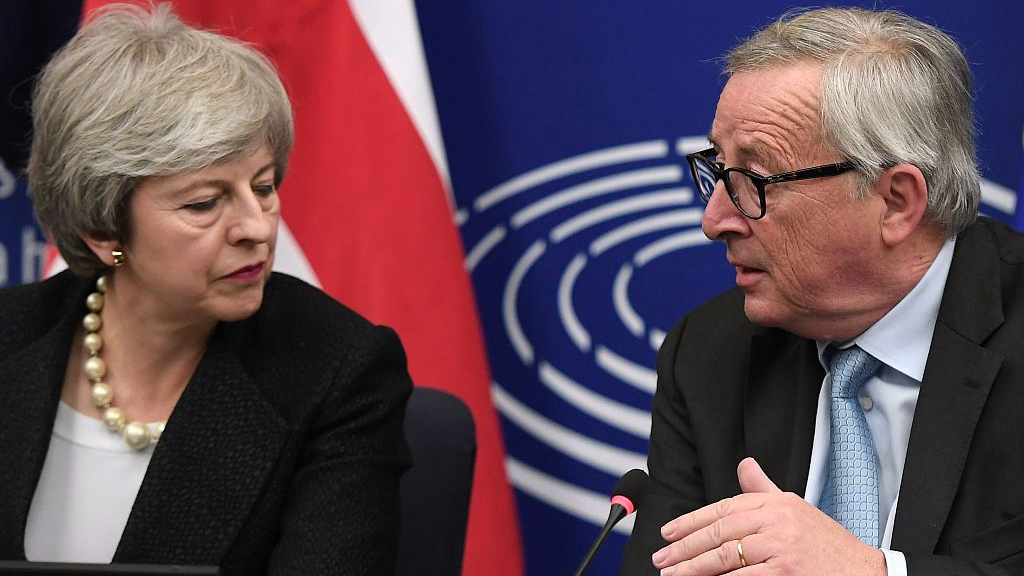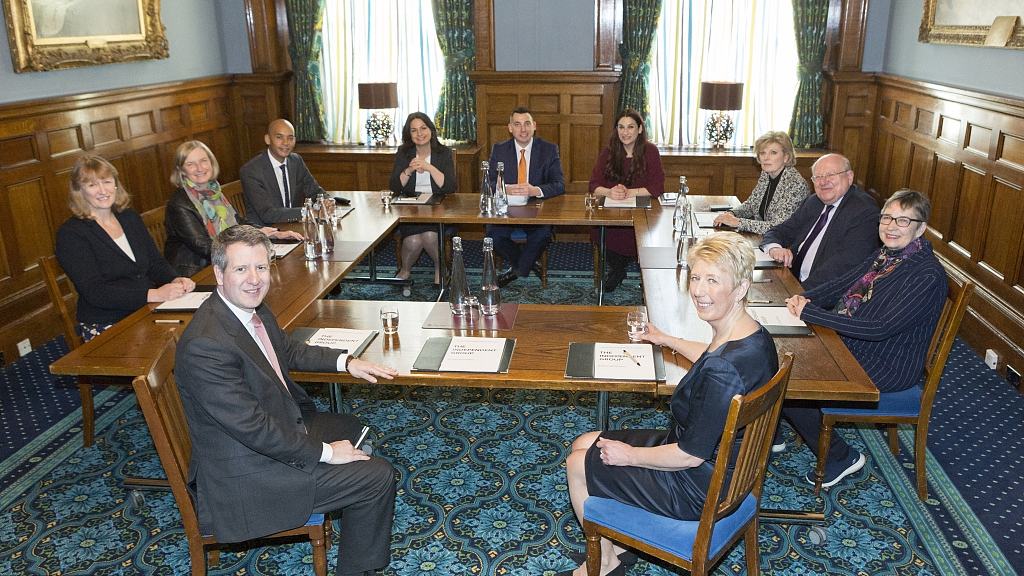
Europe
17:02, 12-Mar-2019
Will UK Parliament approve May's 'revised' deal?
Updated
17:26, 12-Mar-2019
By Nayan Seth, Li Jingyi
02:48

After a late-night huddle in Strasbourg, both the British Prime Minister and the President of EU Commission claimed to have achieved a breakthrough in Brexit talks by adding two supporting documents to the withdrawal agreement.
So what exactly are the details of the new agreement between the UK and the EU? And will it be enough to convince the divided House of Commons to support Theresa May's deal? Here's might be the answer.
Read more:
May claimed that the legally binding arrangement could now be used to start a "formal case" against the EU if it tries to keep the UK tied into the backstop, a safety net to maintain an open border between the UK's Northern Ireland and the Irish Republic, beyond the transition period.
The latest pact stressed the "legal force" and "binding character" of the withdrawal agreement. The second document is a joint statement between the UK and EU, which committed to replacing the backstop before it comes into effect by the end of 2020, thus avoiding the special territorial status for the Northern Ireland region.

European Commission President Jean-Claude Juncker (R) and British Prime Minister Theresa May give a press conference following their meeting in Strasbourg, on March 11, 2019. /VCG Photo
European Commission President Jean-Claude Juncker (R) and British Prime Minister Theresa May give a press conference following their meeting in Strasbourg, on March 11, 2019. /VCG Photo
During the joint conference with European Commission President Jean-Claude Juncker, May clearly stated that "MPs were clear that legal changes were needed to the backstop. Today we have secured legal changes."
Experts believe the last-minute agreement will have a significant impact on upcoming parliamentary votes.
On Tuesday, MPs are scheduled to decide on May's revised plan for Brexit. If her plan gets approved, Britain will be on course to exit the European bloc on March 29. But if May loses Tuesday's vote, she'll back to square one - leading to a second vote on Wednesday and a possible third one on Thursday.
Read more:
May is hopeful that she can push her deal through in the parliament. She needs to get a simple majority in House of Commons to get her Brexit deal approved.
The House of Commons has a total strength of 650 MPs. The House Speaker and 10 other MPs do not take part in voting. So May needs the support of 320 MPs to sail through.
May's conservative party has 314 members, who are deeply divided over May's deal. Analysts believe that the latest concessions from the EU may strengthen the PM's position in her party.

Eleven members of the independent group first meeting at 1 George Street Westminster in London, England, February 25, 2019. /VCG Photo
Eleven members of the independent group first meeting at 1 George Street Westminster in London, England, February 25, 2019. /VCG Photo
Meanwhile, the Northern Irish Democratic Unionist Party (DUP) also has a crucial role to play. With 10 MPs in the parliament, it ensures the survival of the May government, and it might rally behind the prime minister now.
On the other hand, the opposition Labour party, with its 247 MPs, is likely to reject May's proposal. And the so-called "independent group" with 11 MPs, who recently resigned from the Labour and Conservative parties, may also oppose her plan. The remaining Scottish National Party with its 35 MPs and other smaller parties are also unlikely to offer any support.
Critics argue that giving MPs less than 24 hours to make their decision is inadequate, nevertheless, May is hoping that parliament will rally behind her "improved" deal and put an end the Brexit chaos, at least for now.
(Cover: Pro-EU supporters protest outside the Houses of Parliament as they campaign to stop Brexit and demand a people's vote on EU membership, London, England, March 11, 2019. /VCG Photo)

SITEMAP
Copyright © 2018 CGTN. Beijing ICP prepared NO.16065310-3
Copyright © 2018 CGTN. Beijing ICP prepared NO.16065310-3